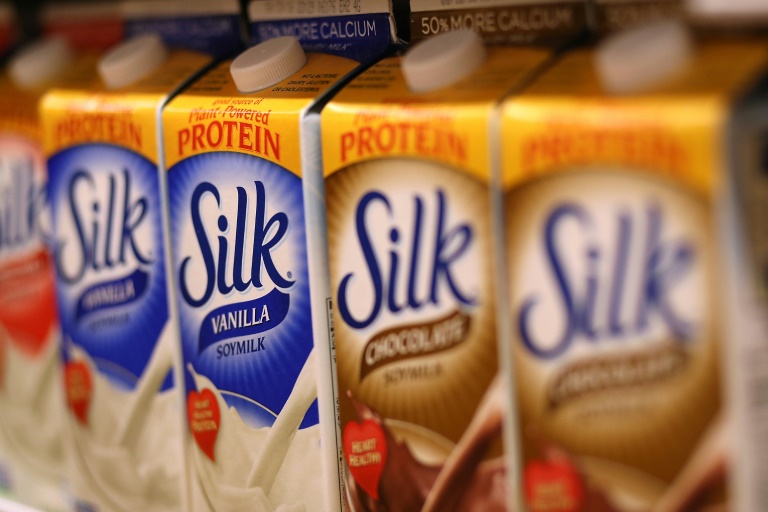Godongwana consents to court order against VAT increase
With supply exceeding demand, large farms taking center stage and plant-based alternatives luring consumers away, times are hard for small organic milk producers in the United States.
“At the current prices, we are in the red,” said Spencer Aitel, who keeps 55 milking cows on his Two Loons Farm in Maine.
At the request of his co-operative, he had to reduce the size of his herd by 20 percent.
But a little over 20 years after entering the organic business in 1996, Aitel has paid off most of his debts and is confident the crisis in the industry will pass.
“I don’t think 2018 is going to work — 2019 might,” he predicts.
“Younger people that we work with are in panic because they are really not making enough money — many are trying to find a way out.”
US co-operatives enticed by consumers’ enthusiasm for organic products encouraged farmers to expand or switch their traditional dairy operations over to organic production to meet the demand.
But after several years of double-digit growth, sales have ground to a halt — stagnating at around 5.5 percent of the milk market share in 2017.
Broadly, Americans consume less milk than in the past.
Some now opt for soy or almond varieties, while others have balked at the price difference between standard and organic options — in one New York supermarket on Tuesday, a half-gallon (1.9 liters) cost $2.79 and $5.29, respectively.
As a result, demand dried up just as a wave of new farmers flooded the market, and as production resumed on existing farms after a pause of a year or more.
– 19,800 cows –
Faced with a surplus, big buyers like Organic Valley or Danone have imposed production quotas and told some dairy farmers their contracts won’t be renewed.
“Recovery will take time,” French group Danone, which sells Horizon organic milk in the United States, said in February.
As well as reducing purchases, Danone is trying to deal with the crisis by redirecting surplus to other products such as yogurt, cheese and special milk products including a “grass-fed” line.

French group Danone sells Silk soy milk and Horizon organic milk in the US
Small producers say they are concerned about the growth of huge companies with operations covering the whole production chain, such as Aurora Organic Dairy.
With 19,800 milking cows spread around several sites in Texas and Colorado along with its processing plant, the group supplies the biggest supermarket chains in the country.
According to the US Department of Agriculture (USDA), the six certified organic dairy farms in Texas had more cows in 2016 than the 486 farms in the state of New York.
Jim Goodman, who owns 45 cows in Wisconsin, says he is incensed that such huge corporations benefit from the “organic” label.
The price of his milk has plummeted around 30 percent in two years.
“At this point, it is manageable. But if bigger organic dairies in the western US keep production flowing, our organic processors may not have a market. They already started to drop some producers,” he said,
– Losing markets –
Some of Goodman’s fears seem to be accurate.
In a report released last week, the USDA confirmed that “at least some of the Wisconsin produced and processed organic milk will be replaced by milk trucked to Wisconsin from among the largest US organic mega dairy farms.”
“Even with estimated trucking costs from Texas to Wisconsin of up to $5.00 per hundredweight, some Wisconsin processors have switched from sourcing local milk, to milk trucked from Texas,” the report said.
Goodman says he would like the USDA to tighten controls on bigger farms, but in deciding on Monday not to do so for conditions related to organic production, it seems unlikely.
Aurora went on the defensive, saying: “We only produce enough farm milk for the planned needs of our customers.”
The company says it also plans to create new products and open a new plant in Missouri, to “stimulate new demand.”
For Albert Strauss, who heads up the Strauss Family Creamery in California, this trajectory puts the whole industry at risk.
He backs a model of regional farming chains — which he says allowed him to cut volume by just five percent 18 months ago, and his prices by only around five percent over the last six months, for the nine farms with which he works.
“There were 4.6 million dairy farms in the 1940s,” he lamented.
“There are about 40,000 left, and they think it will be 20,000 in the next decade.”
Download our app